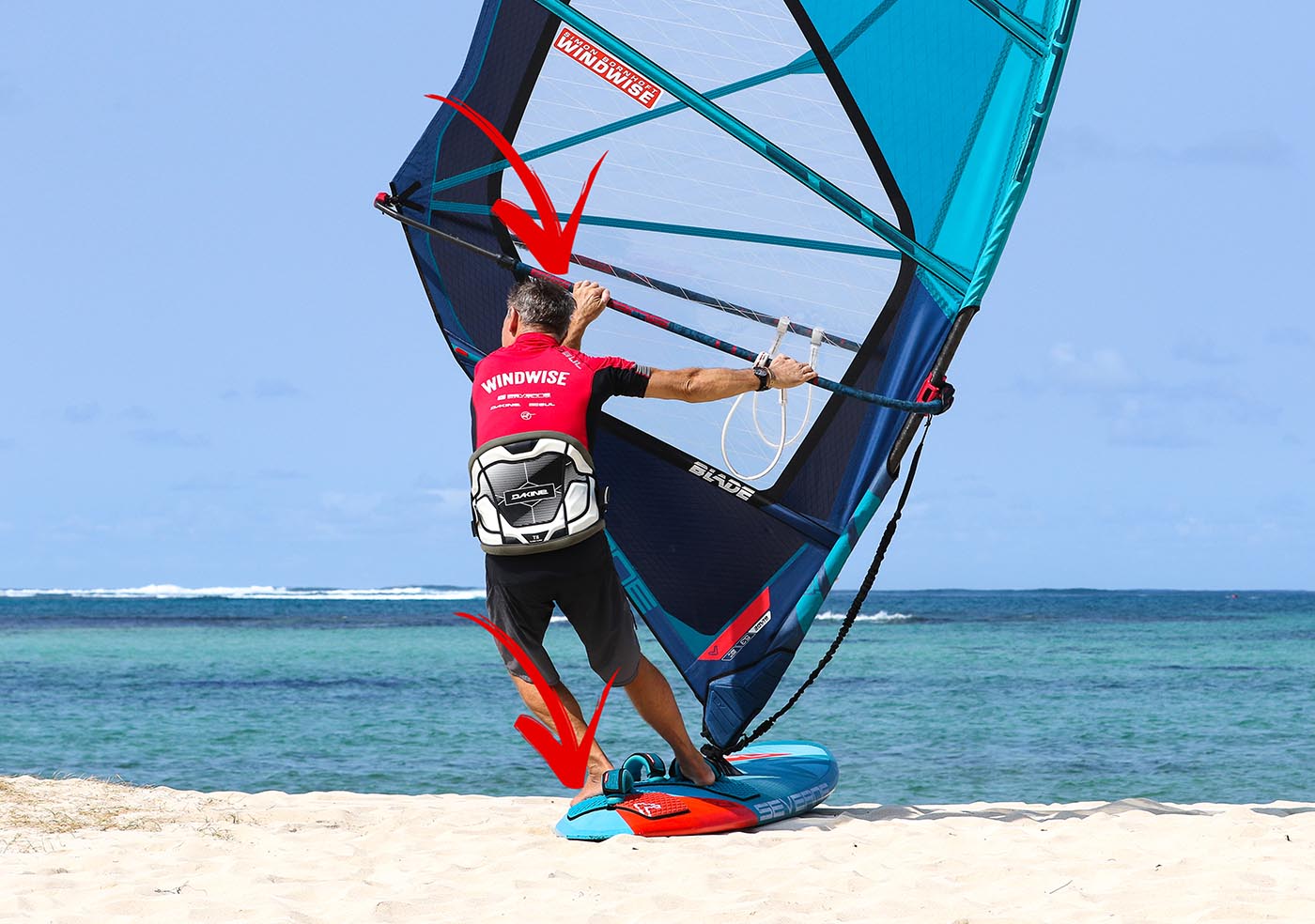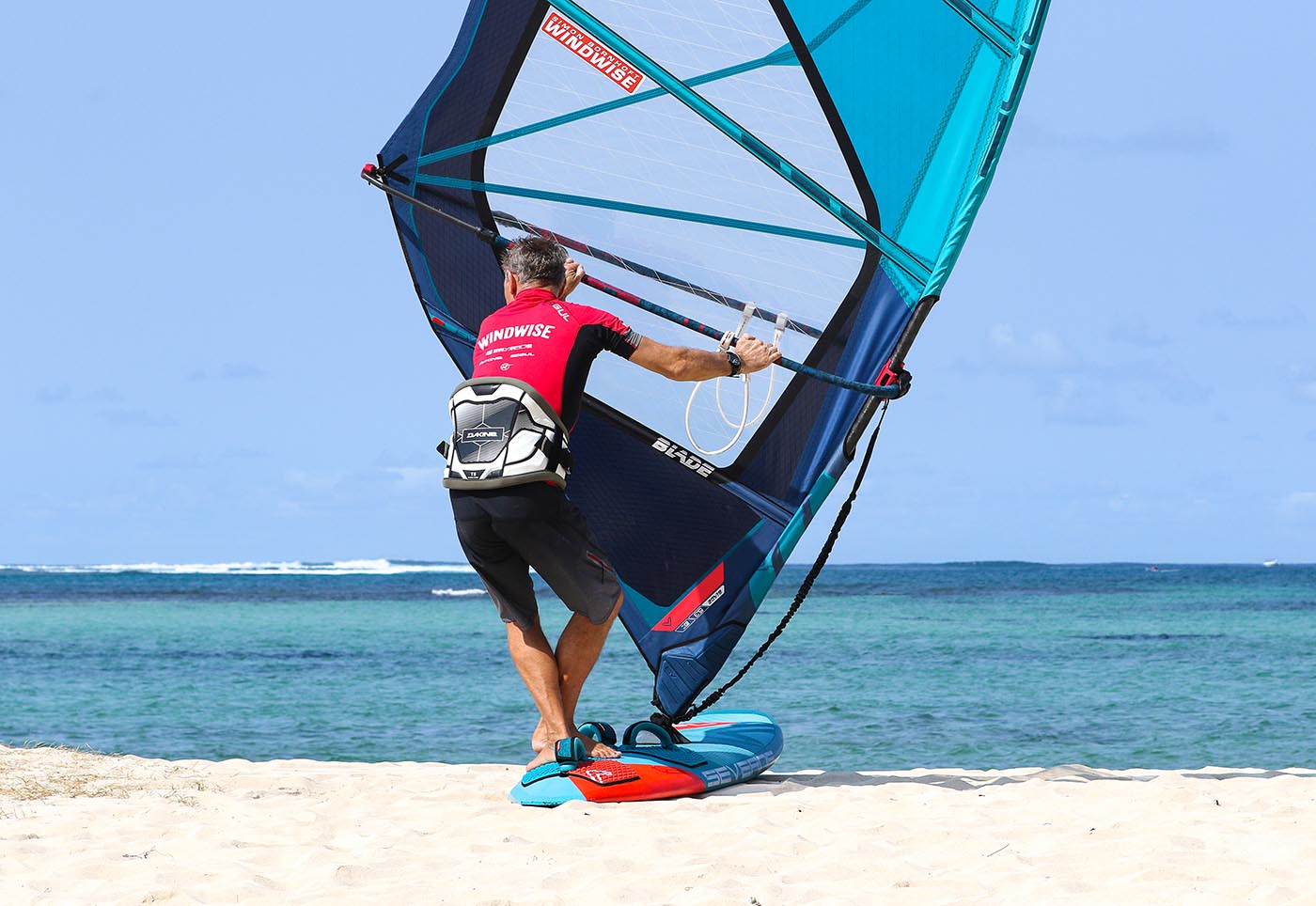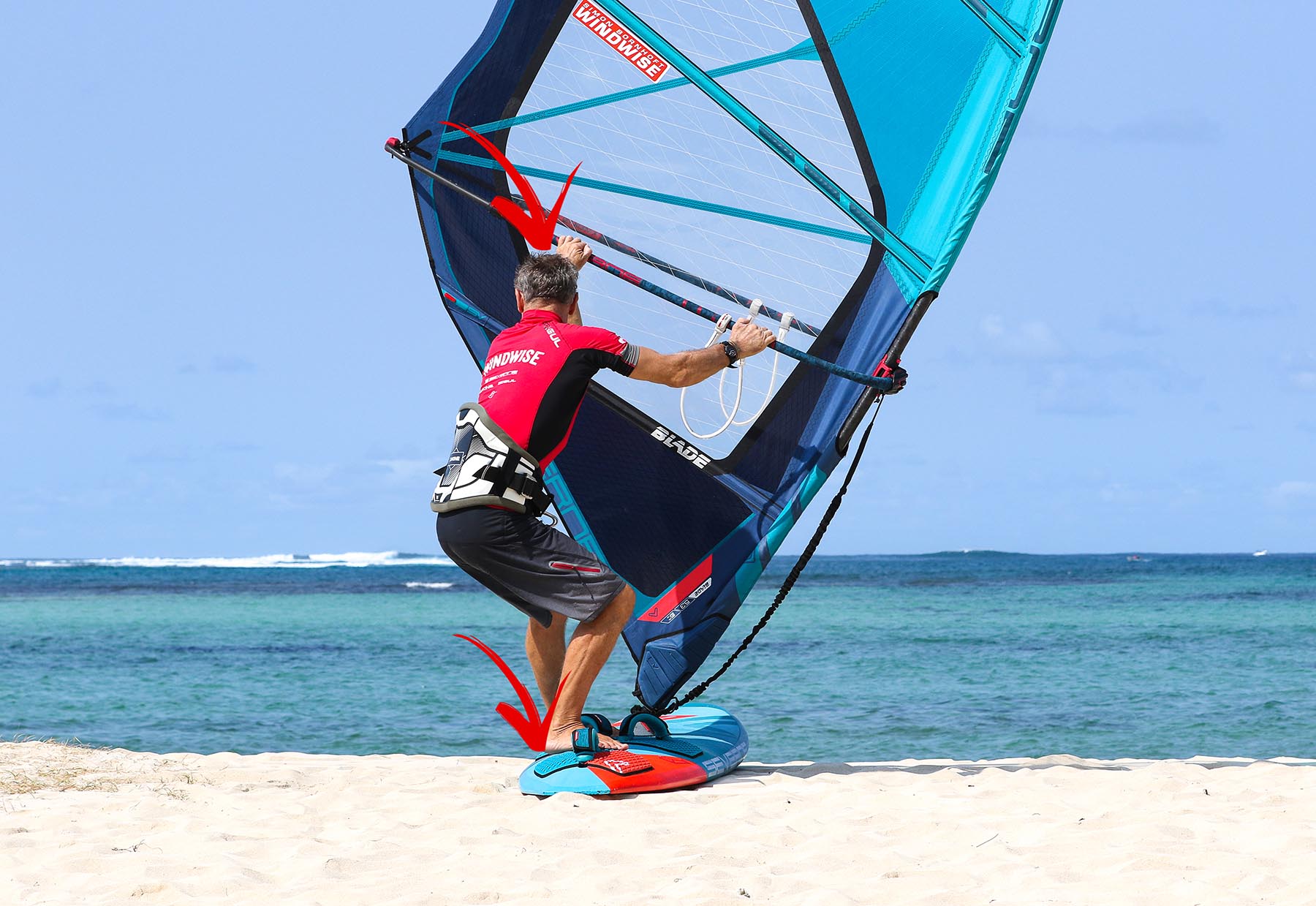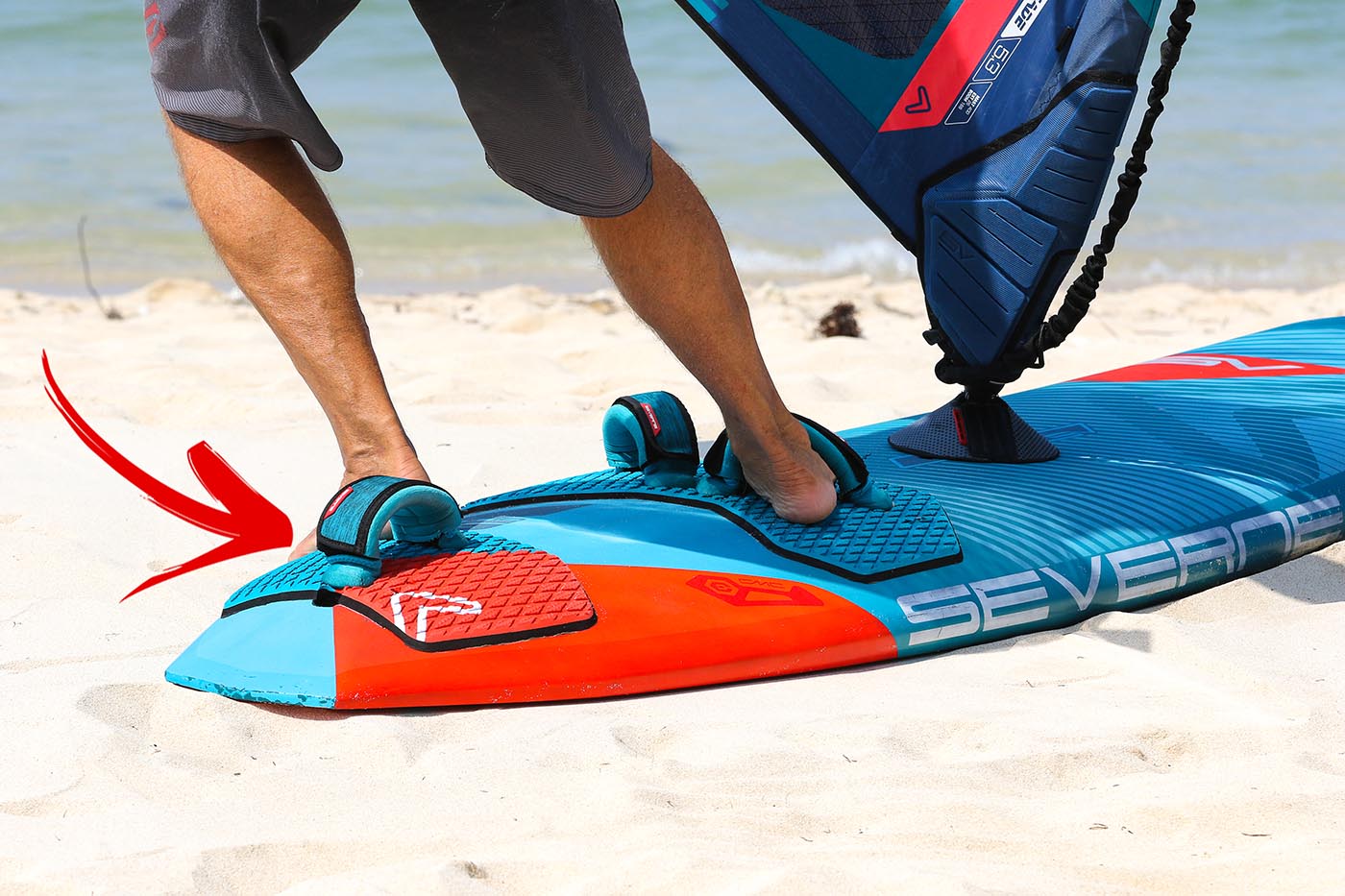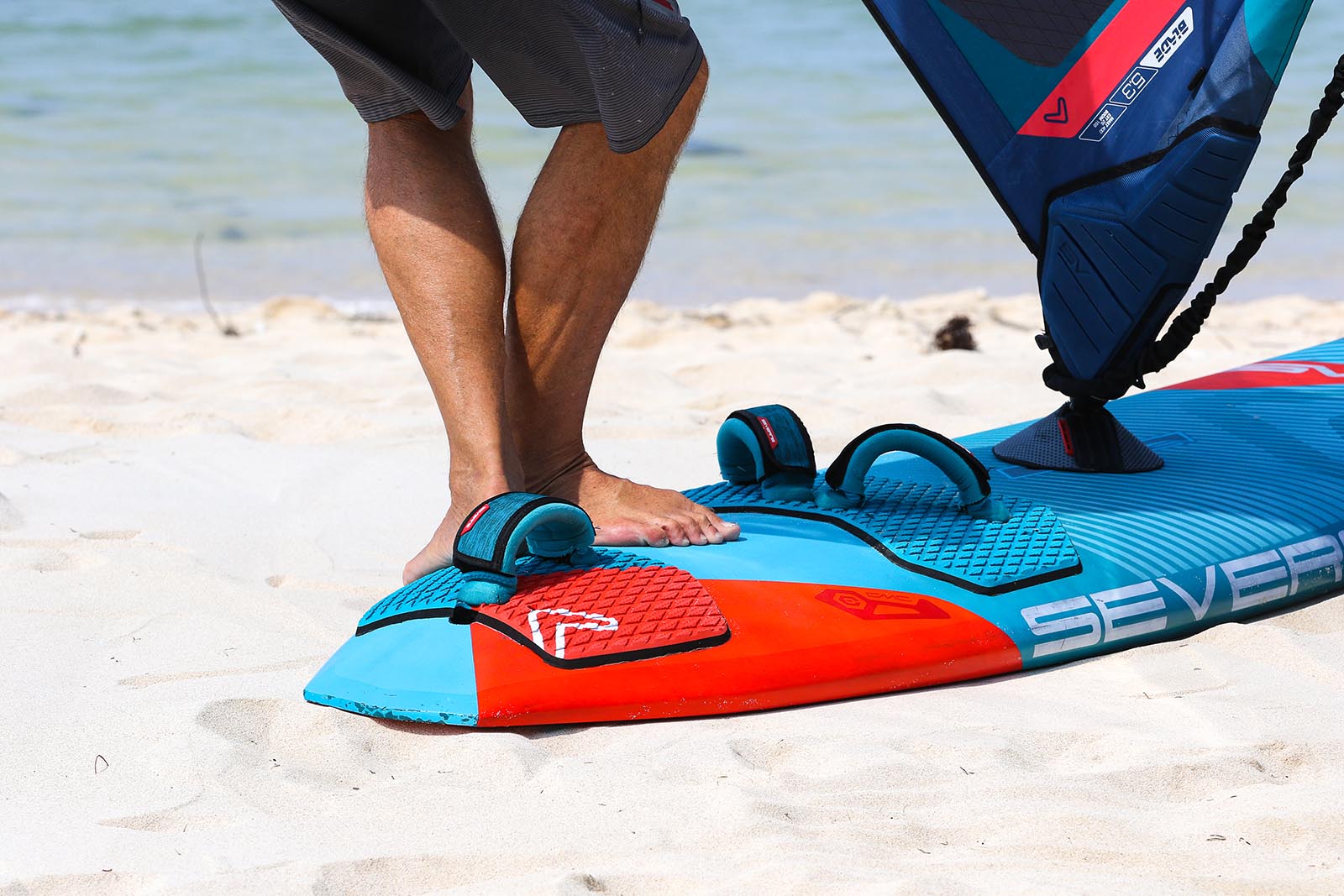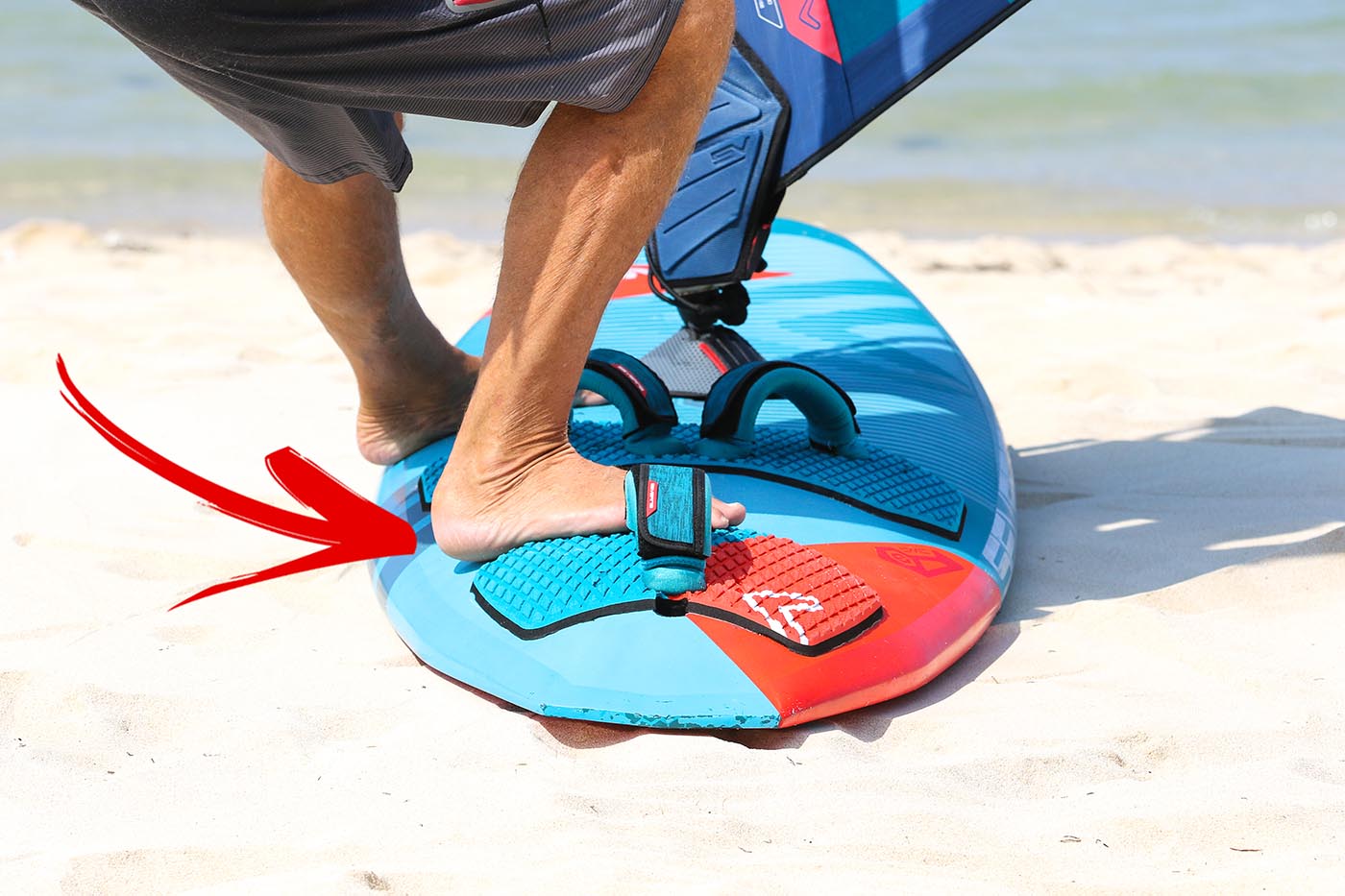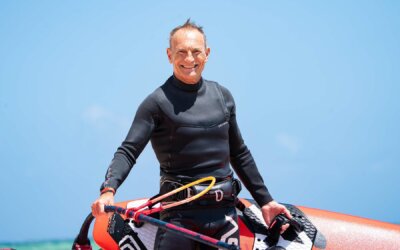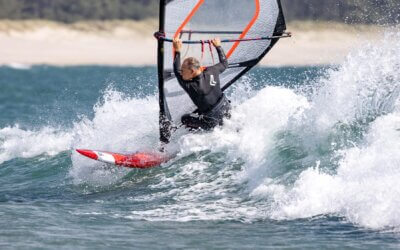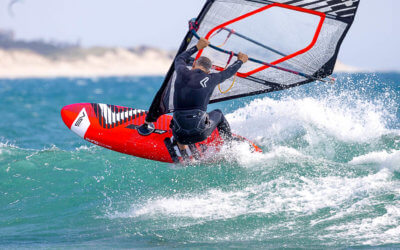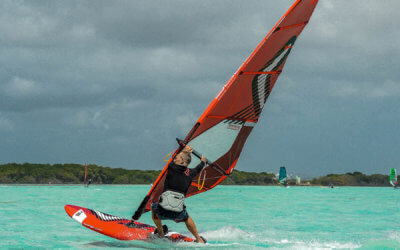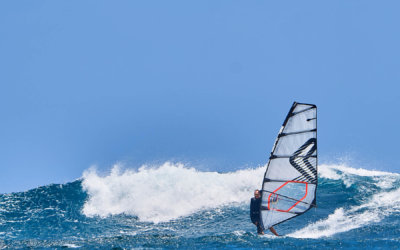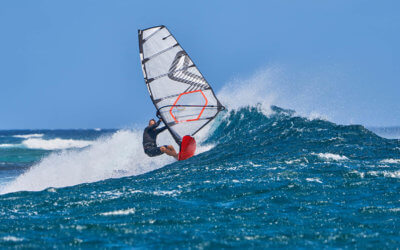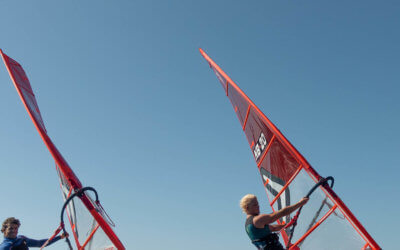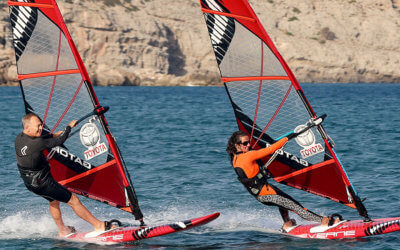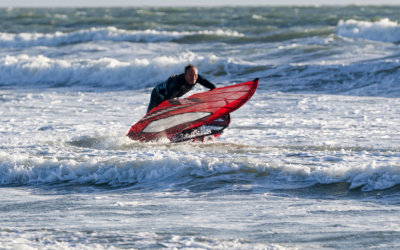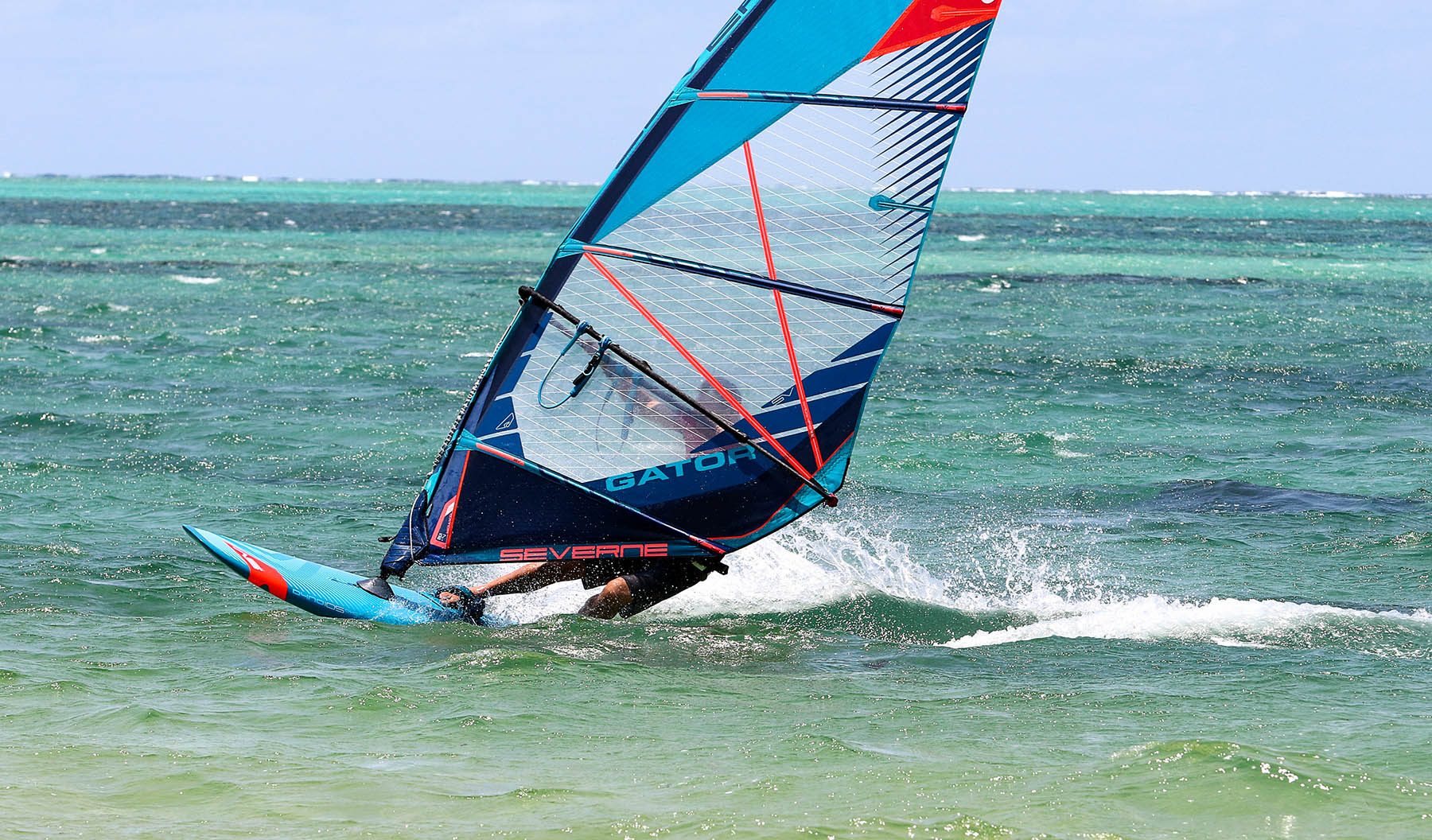
Dyno Kit Tune Up Reminder
Flat water blast and gybe = Outboard Straps & Single Fin
Rough water, jumping, riding and gybing = Inboard Straps & Thruster Set Up
Severne Team rider and coach, Simon Bornhoft, continues his Windwise quest to give you dry fast gybes and will help you get the most out of your Dyno too!
Who’s not hesitated, stumbled or become unbalanced during a gybe? We can blame the wind, sail size, chop or the night before, but poor Vision, no Opposition, not enough Warrior and a misplaced foot can account for many a dismount at all levels! So we’re going to ramp up your gybe consistency and exit speed by shining the spotlight on a Windwise Core Skill and key Touch Points. This will maximize your carving skills and preserve rig control, board speed and sailor stability during the most precarious part of the gybe. As ever, we’ll blend in our Windwise Warrior ethos to help you Shift & Switch those feet!
Who’s This For?
- If you are doing non-planing gybes and want to get the basics – DRILL THIS SKILL!
- If you’re struggling to steady the middle and end of your planing gybes – THIS IS PARAMOUNT!
- If you’re seeking for extra exit speed – MASTER IT!
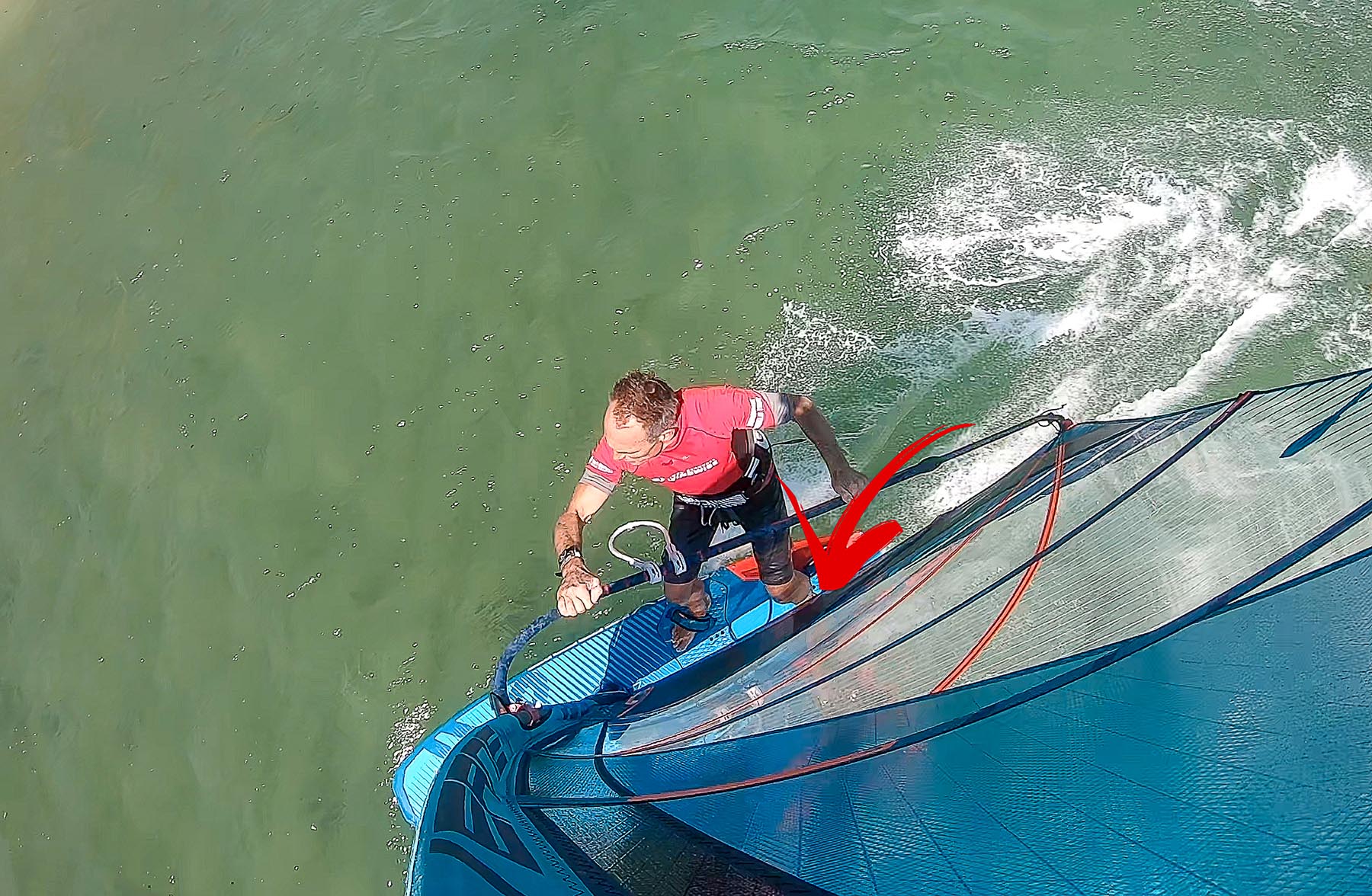
Set Up Recap
In part 1 of our Gybe Wise feature, we highlighted the key Windwise Touch Points that mean you can set up for your gybes with the deck stacked in your favour. So get your set up right to increase your chances of a cleaner gybe enhancing foot change! Here’s a little recap.
Set Up & Unhooking Touch Points
- Clew hand shifts down the boom (approximately 40-50cm) prior to unhooking.
- Rear foot comes out of the strap, heel momentarily on the ‘windward’ side next to back strap.
Set Up Carving Touch Points
- Rear foot slides across onto leeward side next to back strap.
- The foot of the sail sheets in close to or ideally touches the inside carving leg.
So what’s next? Time to ‘Shift & Switch’
From this stage of the gybe, we need to set up the foot change. To create the room, stability and counter balance to switch the feet whilst still banking the board, we need to angle the rig out of the turn, keeping the clew hand pulled DOWN in tight, as if talking into a microphone. Then can we Shift & Switch the feet without losing the rig.
When do I actually change the feet?
- Just past the ‘dead downwind’ stage of the gybe. So keep your head up so you know where you are in the turn. Most people leave the foot change and consequentially the rig change too late by about 1-5 seconds, which means you either slow down on a too wider arch or you come too far round and spin into the wind at the end of the turn. “Look and lean in Warrior, then feet early, rig early = plane out early!”
So here goes…
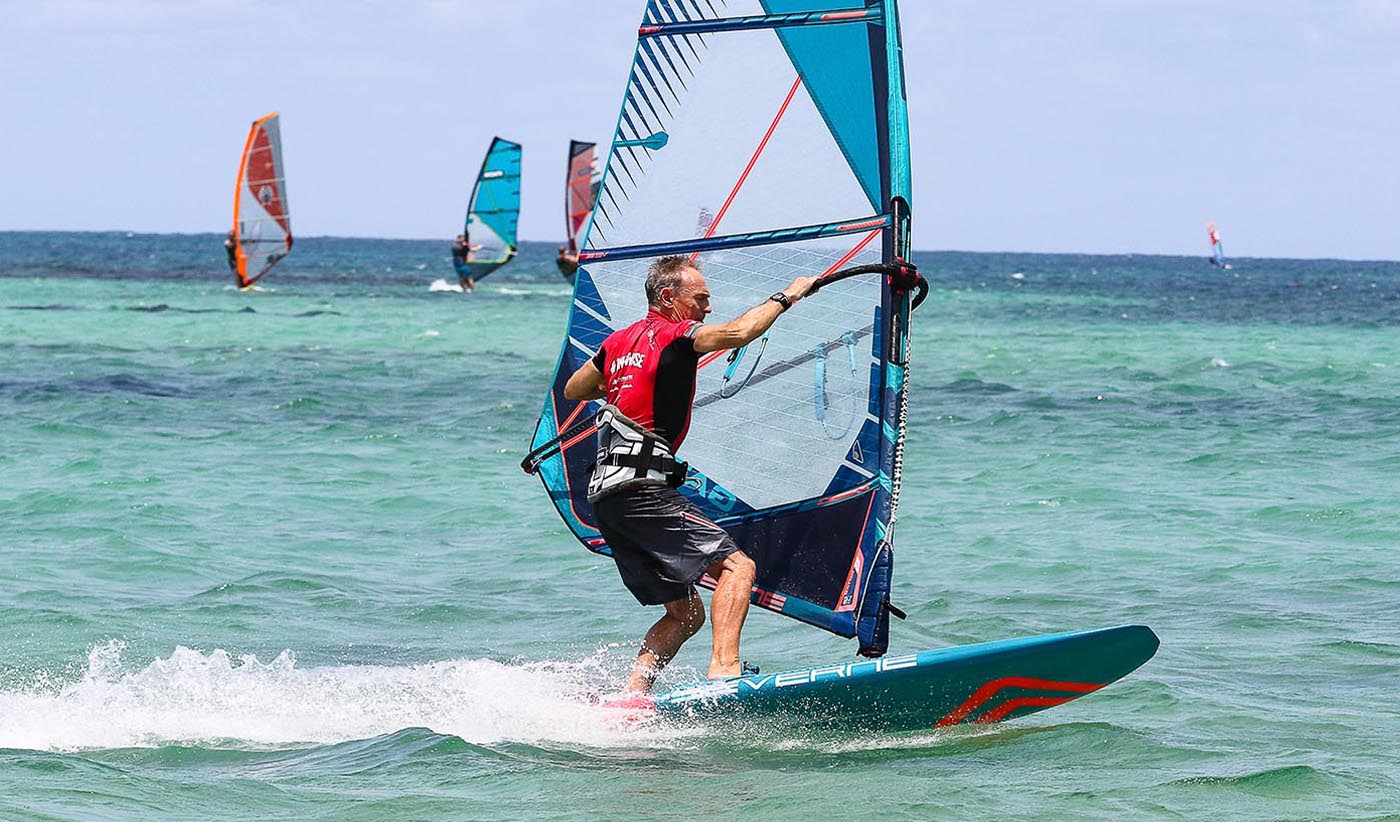
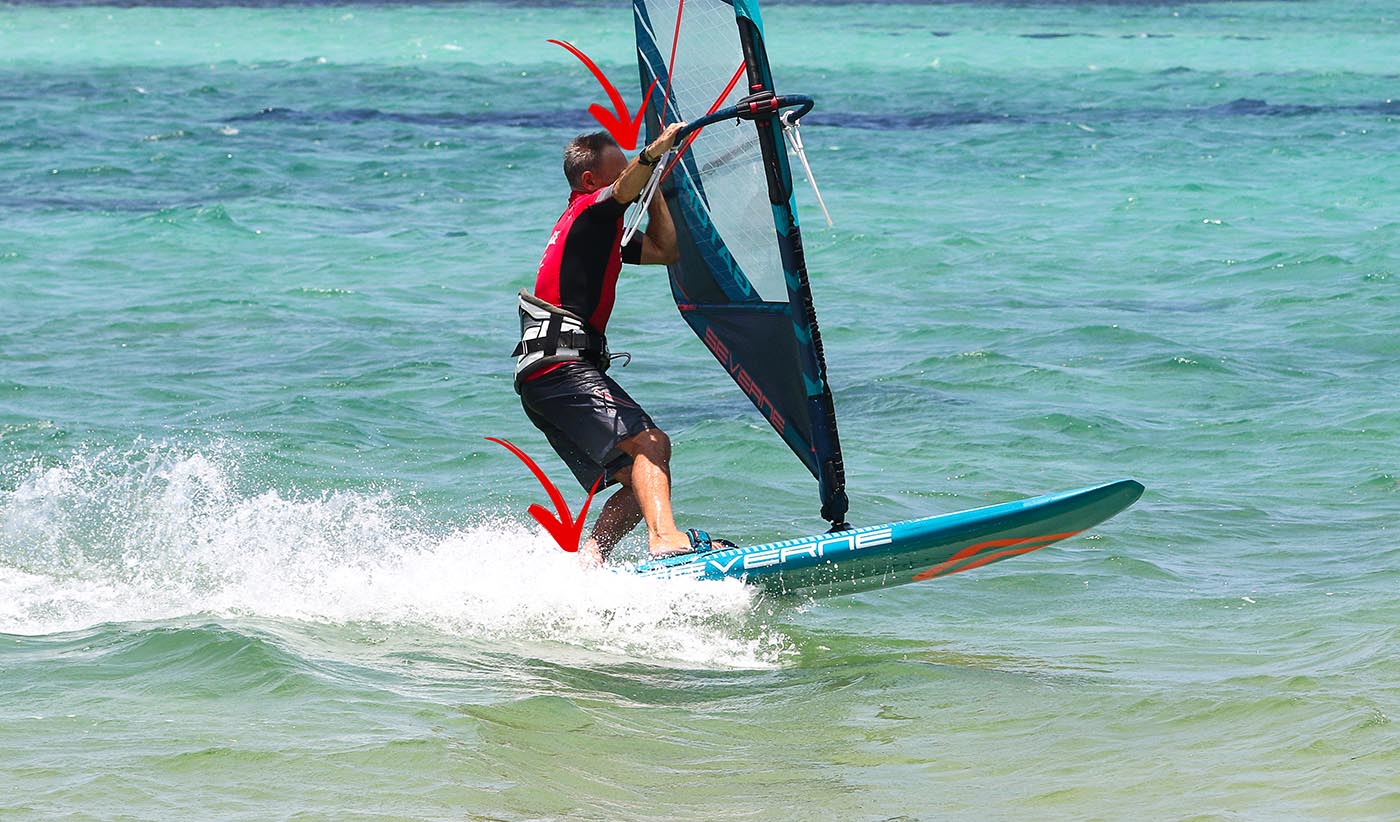
WARRIOR CARVING
Progressively lean into the turn, accentuating that Warrior stance to engage the rail.
“Look” through the turn to where you want to go, chin towards or on the inside shoulder.
“Lean” your body in Warrior – Head and hip over that flexed carving knee and ankle!
“Lever” the rig progressively out of the turn pulling in and down on the clew hand, like talking into a microphone by bringing the clew hand in towards the head and DOWN as the mast arm extends.
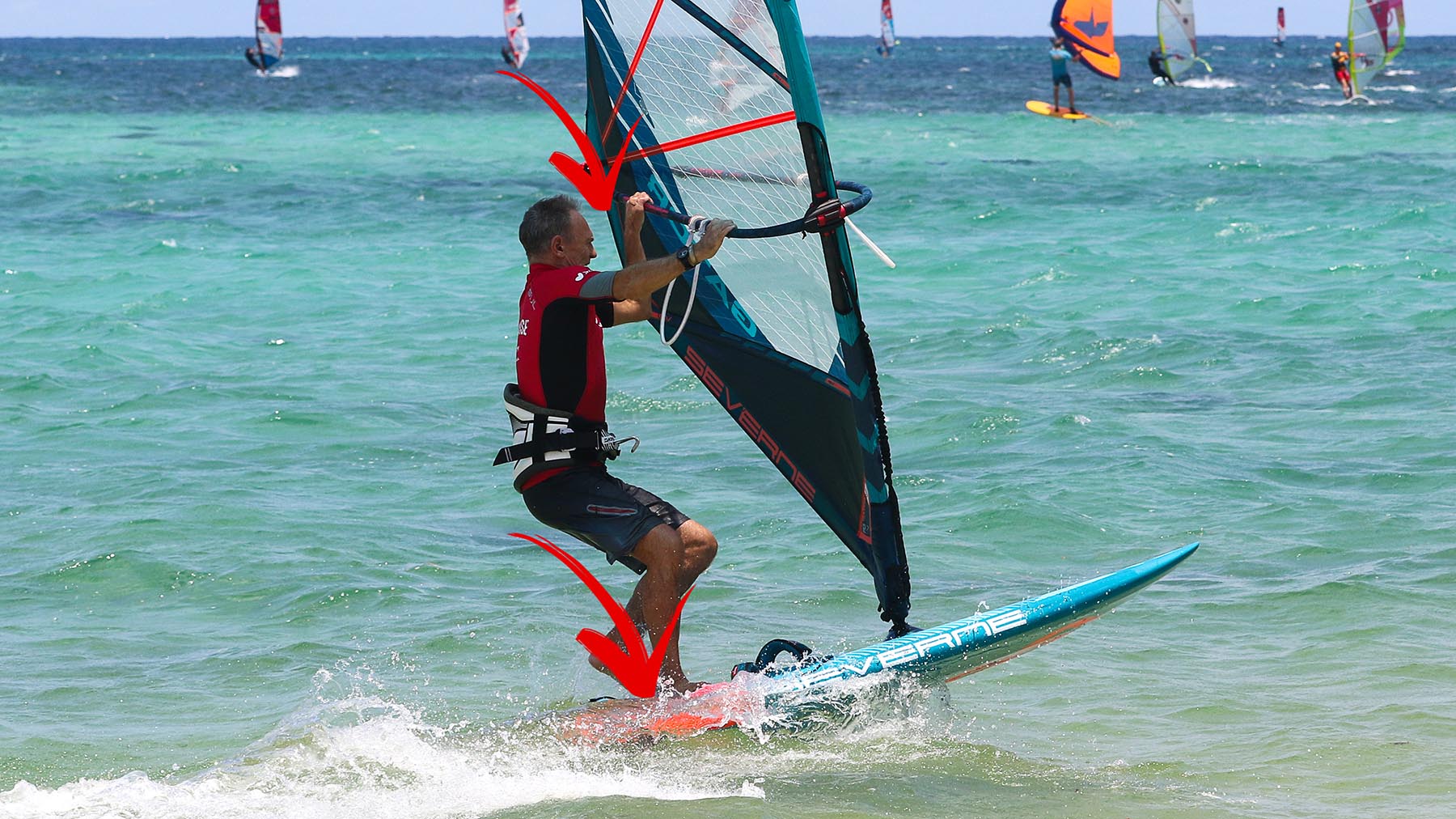
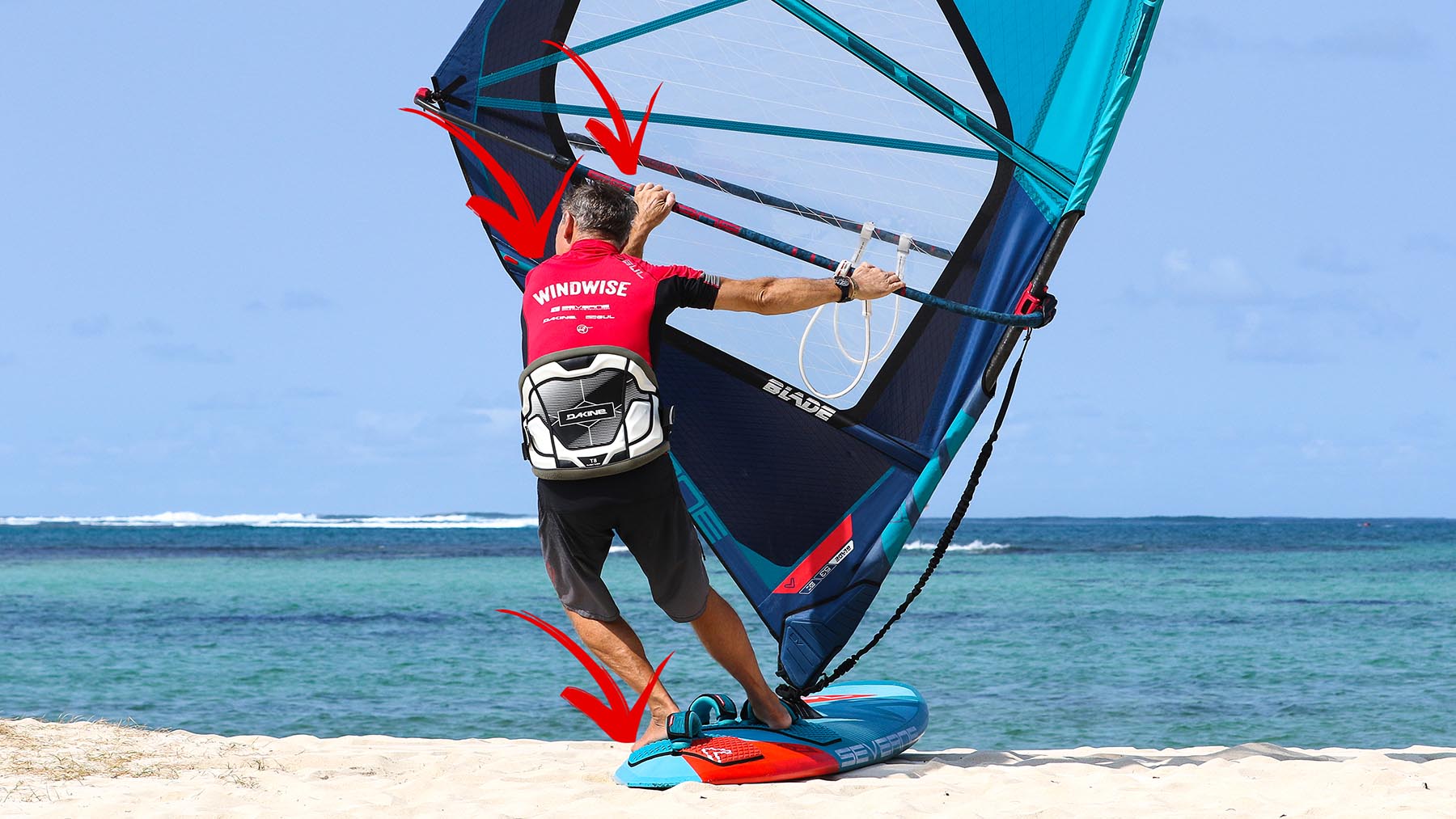
WARRIOR CARVING & FOOT CHANGE
Whilst maintaining that Warrior stance, looking and leaning over the flexed rear knee, the inside hip shifts and drops. Just after the dead downwind / apex of the gybe, the old front foot slides out of the strap and switches across the board to replace the rear foot. Switch super quickly and right across to the rail.
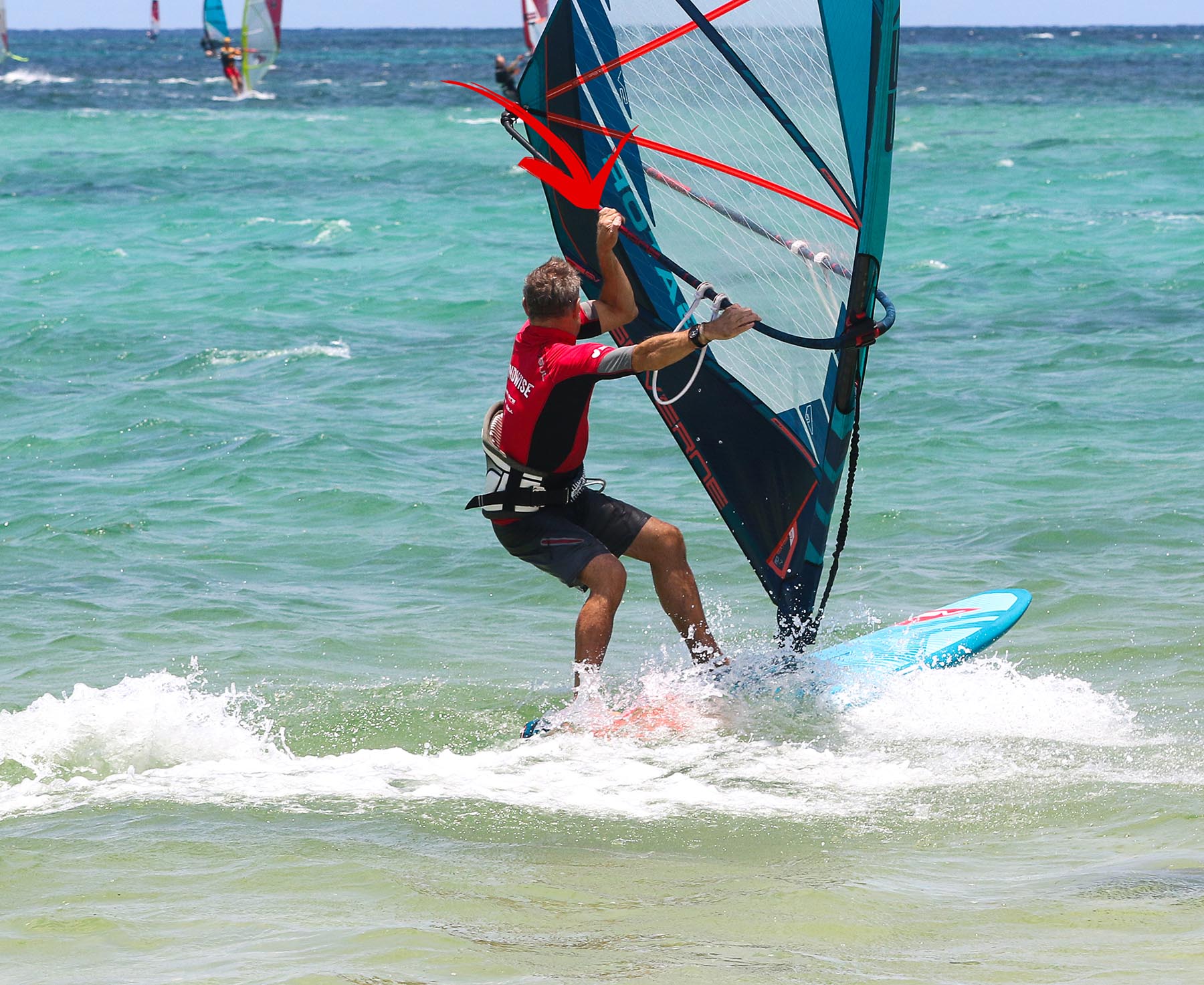
RIG AT 90 DEGREES
Switch that rear foot, by virtually knocking it out of the way with the new rear foot. Place the new front foot on windward rail just behind mast base, BUT keep the hips low and back, pulling down on the boom, keeping the rig at 90 degrees to the board, going downwind on a very broad reach. At this stage so many stand up and sail “across the wind clew first”. This is why you’ll lose speed or control of the rig when rotating it. Keep broad and stay low!
Vision: Look out of that turn, chin STILL on what has become the front shoulder!
Touch Point: Keeping pulling in and down on the clew hand and keep on a broad reach when rotating the rig.
WiseWords: Never rotate the rig across the wind, always downwind.
Practice Windwise Touch Points On Land
Remember that prime real estate when carving – Toes on the leeward rail next to back strap and switch that foot early and quickly to get back on that rail. Even if it takes a little shuffle to get the new back foot on the windward rail again, it will make a massive difference to help you get low (wide feet), control the rig rotation and drive the board out of the turn as you collect the sail. It is vastly underestimated, even at the highest levels and a key part of dry beautiful gybing!
Exception To The Rule
Racers on very wide, parallel, hard railed boards, sometimes put their rear foot marginally further forward on the rail for laydown gybes to engage sharper rails and because it’s a long commute and stretch to the other side. But on smaller Freewave boards like the Dyno, get that Touch Point on the rail next to the back strap.
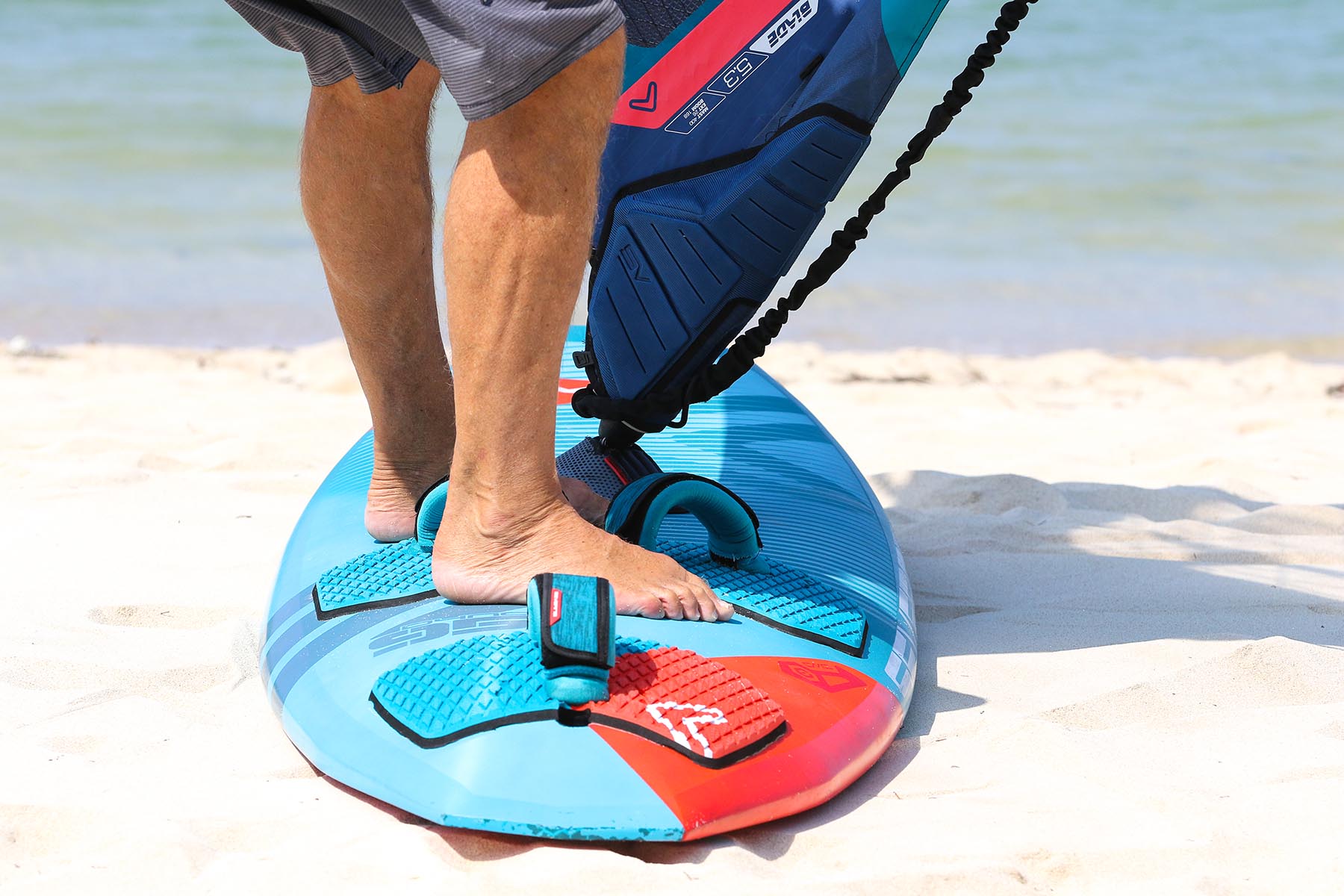
So often after the foot switch, the rear foot is in the middle of the board and the body is too upright. This makes it much harder to continue carving the board and control the rig before, during and after the rotation. Heel to rail and get LOW!
Simon Says
We’ll deal with the rig rotation issues and exit speed next time, but for now, work on exaggerating your Warrior to carve and being very particular about getting those feet firmly planted in the wisest place possible!
Send Simon a question about your windsurfing technique or any aspect about sailing your Dyno info@windwise.net!
Simon Bornhoft Windwise offers unique windsurfing experiences combining proven fast track skills training methodology, welcoming socials and amazing adventures. Plus you can try out the superb Dyno!
Prasonisi 24th Sept – 1st Oct 2020 Freeride & FoilWise
Mauritius 9-18th Oct 2020 Freewave
Your Progression Starts here….www.windwise.net
Copyright: Simon Bornhoft Windwise 2020
More Dyno guides
Dyno Diaries with Simon Bornhoft – One Board One Year – Multiple Progression
As the year closes in, Simon Bornhoft looks back on his Windwise experiences from 2022 picking out some key tipping points of progression and also demonstrates how the Dyno is one board that you can take everywhere with you.
DYNO BOARD SETUP WITH SIMON BORNHOFT PART 19 – HOW TO PREPARE FOR WAVES PART 4
Push it, drive it and accentuate! When conditions are tricky or you’re new to a wave environment, it’s important to stick to a plan and ‘try’ to massively exaggerate everything, no matter what you’re faced with. So, what better than to check out some real examples of Severne rider and Windwise coach Simon Bornhoft’s clients riding the Dyno and putting into practice some of the skills we’ve covered in our recent wave series.
DYNO BOARD SETUP WITH SIMON BORNHOFT PART 18 – HOW TO PREPARE FOR WAVES PART 3
Have you been inspired by the recent PWA Pozo Wave event? Well, here’s what YOU can do to get yourself into waves. Simon Bornhoft continues his Windwise series on how to fully develop your windsurfing skills, maximize your time on the Severne Dyno and, for this issue, continue your mission in the waves. So whether you’re new to freewave/wave windsurfing or polishing up your existing wave skills, this will give you a focus and purpose for your next sessions.
Dyno board setup with Simon Bornhoft part 17 – How to prepare for waves part 2
Severne Team Rider and International coach Simon Bornhoft continues his Windwise series on how best to develop your windsurfing skills. In this part, Simon goes deeper into how to prepare for your next wave session, even though you might not have access to waves.
DYNO BOARD SETUP WITH SIMON BORNHOFT PART 16 – HOW TO PREPARE FOR WAVES
Severne Team Rider and International coach Simon Bornhoft has helped thousands of recreational sailors to get into or improve their wave sailing skills on his Windwise courses. So if you’re on the cusp of venturing into any wave environment here are some skills that can be learnt on flat water and transferred into the rough stuff. Follow these wise words to increase your enjoyment and success rate in 2022!
Everything you need to know about your harness lines – hang In There Part 3 Wave & Freestyle
Windwise coach and Severne Team Rider, Simon Bornhoft, continues his ‘Hang In There’ harness line series looking at different disciplines and sailing styles. For this issue, we shift the focus and harness line positions for the Freewave, Wave & Freestyle playgrounds. So whether you’re a weekend wave warrior or looking to fine tune like a pro, wise up and read on.
Everything you need to know about your harness lines – Hang In There Part 2 Slalom & Freeride
Windwise coach and Severne Team Rider, Simon Bornhoft, continues his quest to help you get the most out of your precious time on the water and your kit. For this feature we continue our ‘Hang In There’ harness line series, looking at different disciplines and styles in windsurfing and draw on the speedy talents of Team Severne top riders.
DYNO BOARD SETUP WITH SIMON BORNHOFT PART 15 – Going shorter
Whether you’re moving into planing conditions for the first time or moving down in board volume, Simon Bornhoft offers some wise words on how to make smaller beautiful.
Dyno board setup with SImon Bornhoft part 14 – carving downwind 360
For this issue, we get into some serious carving with a downwind 360. Just trying them is a great way to improve your gybing ability, board handling and feel that Dyno carving sensation.

